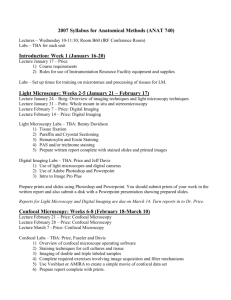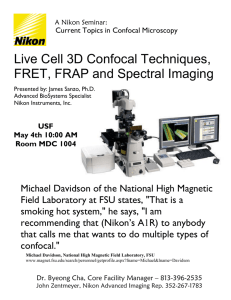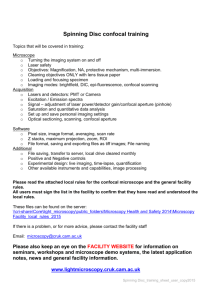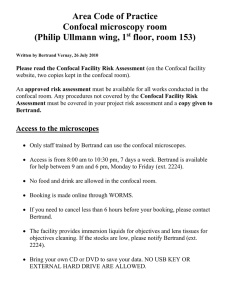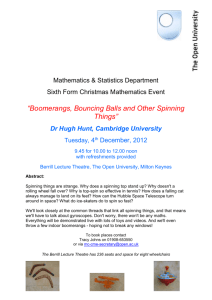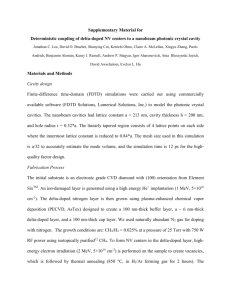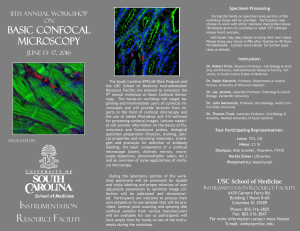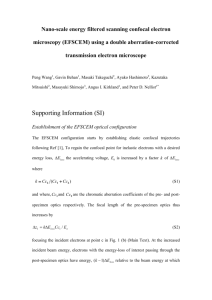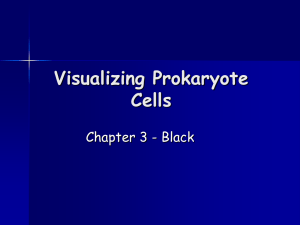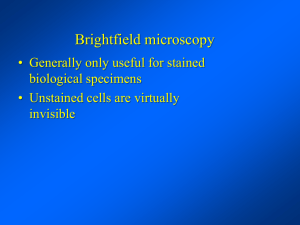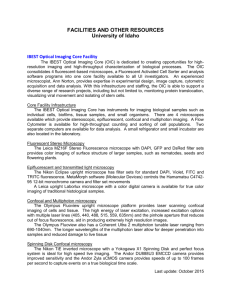Perkin Elmer UltraView Spinning Disk
advertisement
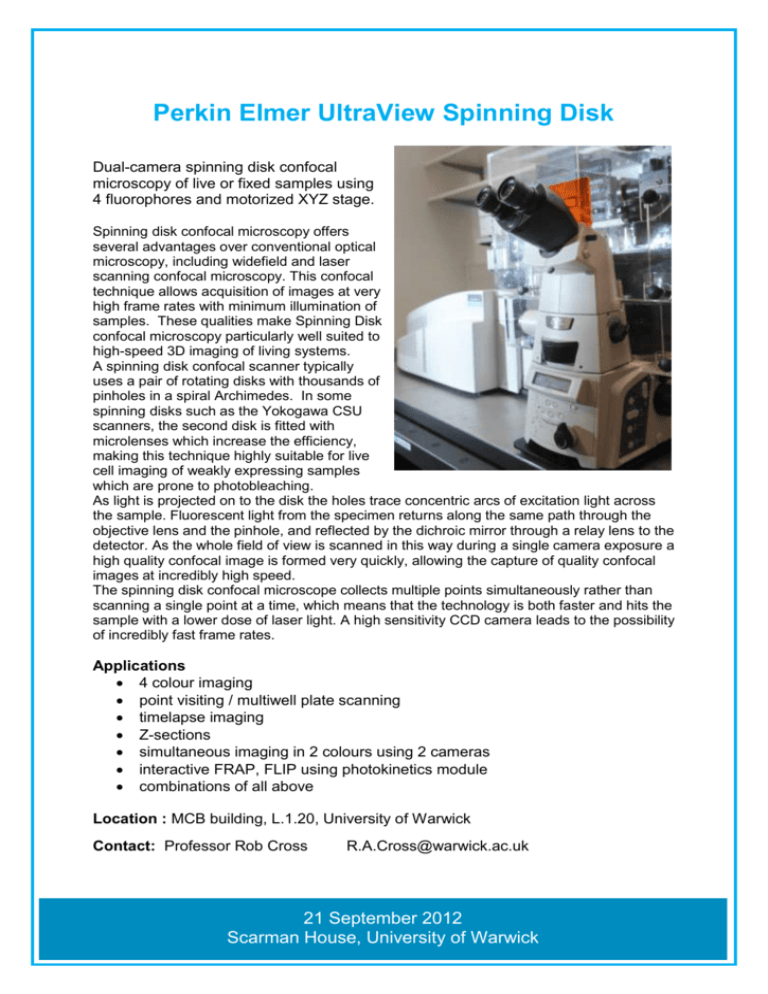
Perkin Elmer UltraView Spinning Disk Dual-camera spinning disk confocal microscopy of live or fixed samples using 4 fluorophores and motorized XYZ stage. Spinning disk confocal microscopy offers several advantages over conventional optical microscopy, including widefield and laser scanning confocal microscopy. This confocal technique allows acquisition of images at very high frame rates with minimum illumination of samples. These qualities make Spinning Disk confocal microscopy particularly well suited to high-speed 3D imaging of living systems. A spinning disk confocal scanner typically uses a pair of rotating disks with thousands of pinholes in a spiral Archimedes. In some spinning disks such as the Yokogawa CSU scanners, the second disk is fitted with microlenses which increase the efficiency, making this technique highly suitable for live cell imaging of weakly expressing samples which are prone to photobleaching. As light is projected on to the disk the holes trace concentric arcs of excitation light across the sample. Fluorescent light from the specimen returns along the same path through the objective lens and the pinhole, and reflected by the dichroic mirror through a relay lens to the detector. As the whole field of view is scanned in this way during a single camera exposure a high quality confocal image is formed very quickly, allowing the capture of quality confocal images at incredibly high speed. The spinning disk confocal microscope collects multiple points simultaneously rather than scanning a single point at a time, which means that the technology is both faster and hits the sample with a lower dose of laser light. A high sensitivity CCD camera leads to the possibility of incredibly fast frame rates. Applications 4 colour imaging point visiting / multiwell plate scanning timelapse imaging Z-sections simultaneous imaging in 2 colours using 2 cameras interactive FRAP, FLIP using photokinetics module combinations of all above Location : MCB building, L.1.20, University of Warwick Contact: Professor Rob Cross R.A.Cross@warwick.ac.uk 21 September 2012 Scarman House, University of Warwick
